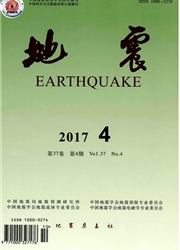

 中文摘要:
中文摘要:
近些年中国油价上调时间与全球大震的发生出现同步,引起地震学家和相关人员的关注。这两者在物理上是毫无联系的事件,然而通过对20032015年的相关资料进行分析,发现两者发生时间具有较好的一致性,即油价上调与全球大震发生具有相关性,这种相关性甚至通过了严格的统计检验,超出99%的置信区间。这个看似荒谬的结论背后隐藏的是一个容易被忽略的统计误区:对事后数据进行统计检验,如果有足够多的样本,通过精心挑选则一定能找到一些样本是统计相关的,即使他们之间没有任何因果关系。揭示这一统计误区对于目前地震预报使用的统计方法有重要意义,上述研究表明仅仅依靠统计检验不能判定某种现象或者异常是否与地震存在必然的因果关系,是否存在物理上的关联,因为所考察的现象或者异常有可能是大量样本中的一个被精心挑选出来的特例。在大数据大量积累和使用的今天,为了避免走人上述统计误区,需要在分析相关性的基础上,对每一种可能的前兆现象进行向前预报检验,同时探求其与地震的内在因果关系,即阐明前兆现象的物理机制。
 英文摘要:
英文摘要:
Gasoline price rises in China show synchronization with the occurrence times of global MT. 0 + earthquakes in recent years, attracting attentions from earthquake scientists and related personnel. Through statistical analysis of these two event sequences during 2003--2015, which are physically irrelevant, we found a significant correlation between them, which seems to be contrary to our common sense. The reason of this paradox is that these two sequences are pre-selected: if the population is sufficient, we can always find some samples highly-correlated with each other, even if these samples have no causal relation at all. The results imply that, some anomalies, which can pass statistical tests and are found retrospectively useful for earthquake prediction, may be not resulted from earthquakes, since they are pre-selected. In practical, such correlation between irrelevant processes can be easily found in the current big-data era, therefore, it is essential to investigate the physical mechanism behind and perform perspective forecasting tests in addition to doing correlation analysis.
 同期刊论文项目
同期刊论文项目
 同项目期刊论文
同项目期刊论文
 期刊信息
期刊信息
